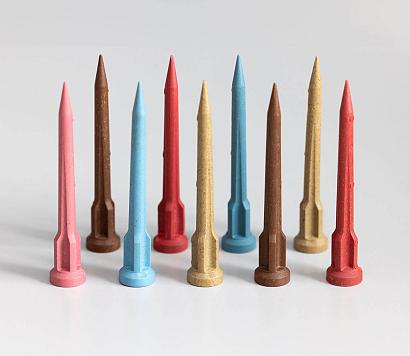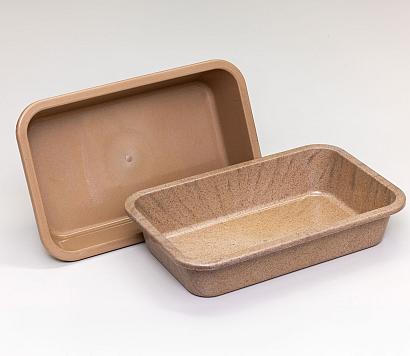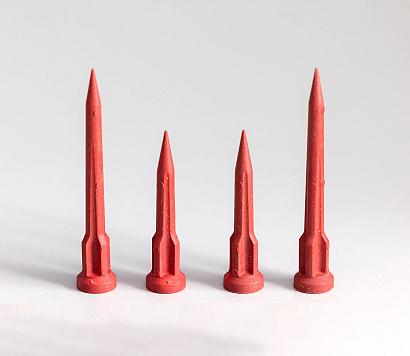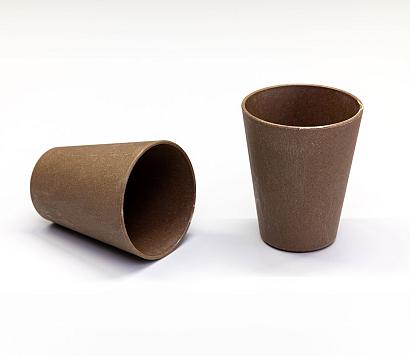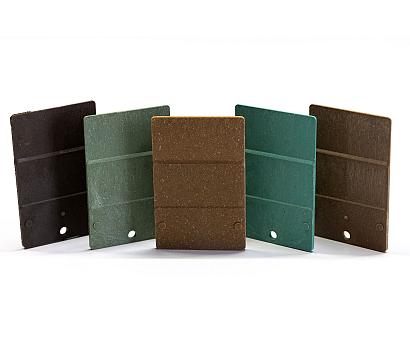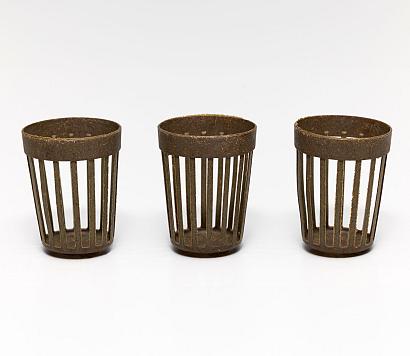
Granules
Truly biobased,
fully compostable
HemCell® biopolymers is based on fibre-rich raw materials manufactured from prepared agricultural palm leaf waste. In an innovative production process, we combine this biological material with existing bioplastics such as PLA, creating a new polymer matrix. Several detailed studies show that the new HemCell biopolymer matrix is a truly new matrix. It is not a composite or compound, but a new monomaterial. Manipulating the composition of the granules, will provide different recipes and granules, each with its own specifications and application possibilities. HemCell® differs from PLA by its higher heat resistance, improved thermoplastic properties and the fact that it is fully home compostable.
Small grain,
revolutionary result
As a rule biobased plastic is only industrially compostable. HemCell, however, will simply compost in the open air. It is 100% biodegradable and leaves 0% microplastics.
The secret of
HemCell granules
The negative effects of plastic use, especially microplastics in the environment, are well known. These environmental impacts are driving market demand for sustainable alternatives such as bioplastics and virgin PLA. Unlike other manufacturers HemCell provides some important (processing) advantages:
- The granules can be formulated according to different recipes, depending on demand, application and volume.
- HemCell is processable at mass temperatures as low as 170 to 175°C with a mould temperature of only 35°C.
- In most cases, the granules can be used with existing moulds and injection moulding machines.
- HemCell granules are not prone to shrinkage.
- HemCell Resin is REACH compliant, TUV Food Contact Safe OM3 and has good OTR values.
- Its HDT is higher than regular virgin PLA at ± 80-85°C.
- Its specific gravity (SG) which, depending on the recipe, is around 0,8 kg/m3 is of interest to designers and processors. Other bioplastics have SGs of about 1.25-1.35 kg/m3.
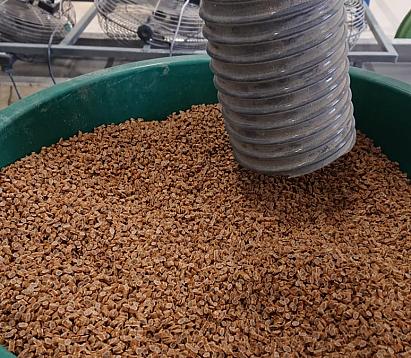
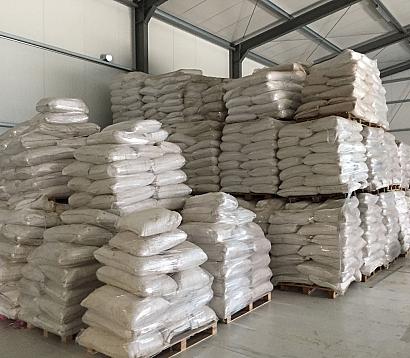
Frequently Asked Questions
-
What is HemCell made of?
HemCell® biopolymers is based on fiber-rich raw materials manufactured from prepared agricultural palm leaf waste. In an innovative production process, we combine this biological material with existing bioplastics such as PLA, creating a new polymer matrix. 100% biobased, 100% home compostable, 0% microplastics.
-
What does home compostable mean?
Products of HemCell will disintegrate completely in the open air, under the influence of weather. What remains is bioactive compost. So, HemCell requires no industrial processing to compost.
-
Why is HemCell more sustainable than other bioplastics?
There are a number of reasons for this:
Other bioplastics are mixtures and only very few are 100% biobased.
HemCell is fully home compostable, whereas other bioplastics must be industrially processed as waste. HemCell means less energy consumption and less carbon emissions.
We do not withdraw ingredients from the food chain. HemCell is made from residual products, from waste. From fallen palm leaves.
Normally, fallen palm leaves are burned. We dry and grind the leaves. So that, too, means less carbon emissions.
HemCell compost is more bioactive than other composted bioplastics.
-
Can Hemcell used for plastic bags or film?
It is not currently possible to process HemCell into thin foil/film.
-
Is HemCell available in all colours?
HemCell is available in a number of natural shades, based on biobased biodegradable dyes.
-
Do injection moulding machines and dies need to be modified?
In almost all cases, HemCell can be used in conjunction with existing machines and moulds, which may require minimal adjustment of settings.
Is your question not listed? Please, contact us.
